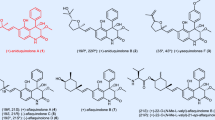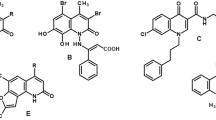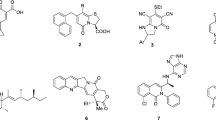Abstract
IN connexion with work on tetrahydroquinoline derivatives of medicinal interest, we have recently synthesized a number of alkoxy- and alkyl-substituted 1,2,3,4-tetrahydroquinolines1 in which various dialkylaminoalkyl groups (carrying in some cases heterocyclic residues such as morpholino, piperidino, etc.) are linked directly to the nitrogen atom. Among the compounds tested so far, N-[2-(4-morpholino) ethyl]1,2,3,4-tetrahydroquinoline (I) has shown interesting biological activity. 
This is a preview of subscription content, access via your institution
Access options
Subscribe to this journal
Receive 51 print issues and online access
$199.00 per year
only $3.90 per issue
Buy this article
- Purchase on SpringerLink
- Instant access to full article PDF
Prices may be subject to local taxes which are calculated during checkout
Similar content being viewed by others
References
Thyagarajan, G., Sidhu, G. S., and Zaheer, S. H., Indian Patents 70175 and 76681.
Kacker, I. K., and Zaheer, S. H., J. Ind. Chem. Soc., 28, 344 (1951).
Gillis, C. N., and Lewis, J. J., J. Pharm. Pharmacol., 8, 606 (1956).
Author information
Authors and Affiliations
Rights and permissions
About this article
Cite this article
SIDHU, G., THYAGARAJAN, G. & ZAHEER, S. New Potent Tetrahydroquinoline Derivative. Nature 193, 692 (1962). https://doi.org/10.1038/193692a0
Issue date:
DOI: https://doi.org/10.1038/193692a0



